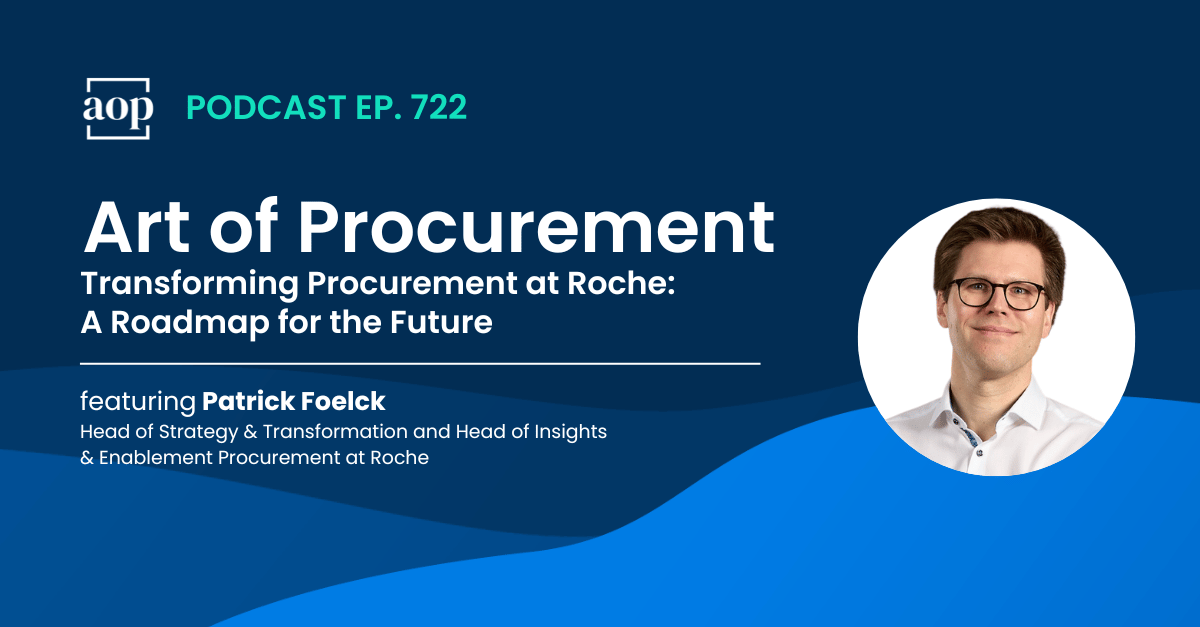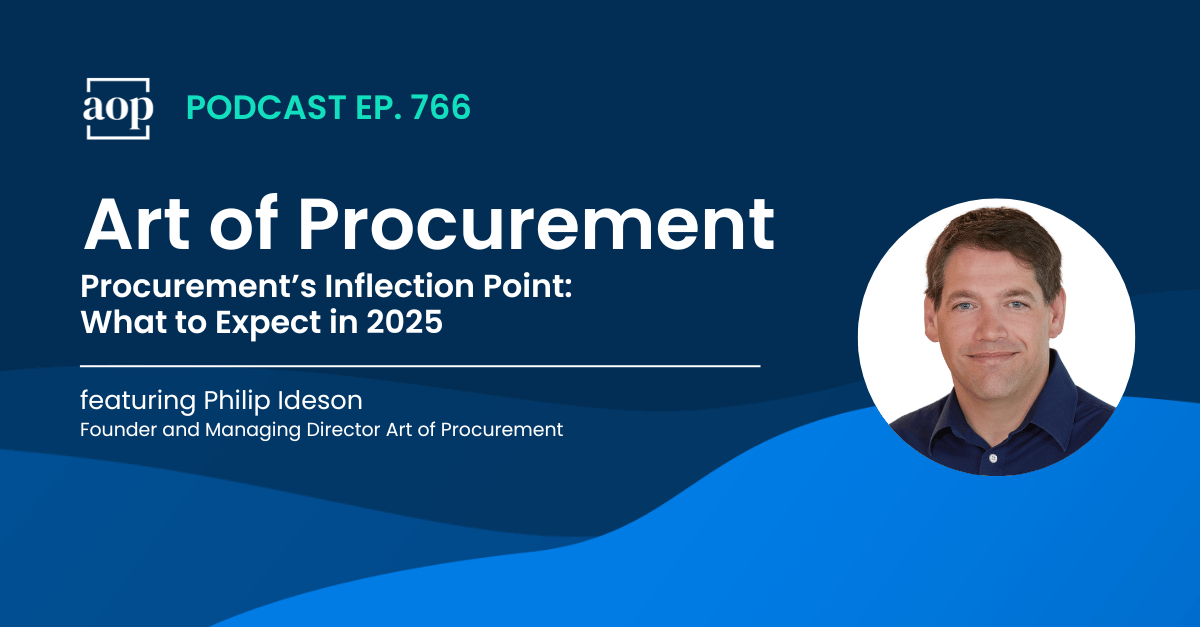3 min read
Transforming Procurement at Roche: A Roadmap for the Future
Philip Ideson : August 11, 2024

“What ultimately drove all of us – leadership team, colleagues, and people in procurement – was the excitement about the future. The ability to contribute very differently to the success of the company, ultimately impacting the patient journey, is a great purpose that we have – curing and helping patients.” – Patrick Foelck, Head of Strategy & Transformation and Head of Insights & Enablement Procurement at Roche
Roche, a global pioneer in pharmaceuticals and diagnostics, has undertaken a significant procurement transformation in recent years, resulting in measurable gains for procurement and for the business in general. Roche’s transformation journey, as described by Patrick Foelck, their Head of Strategy & Transformation and Head of Insights & Enablement Procurement, charts the strategic evolution of procurement from a decentralized model to a highly efficient, consultative, and value-driven organization.
Their efforts demonstrate how organizations, regardless of size or complexity or starting point, can deepen their impact and secure their futures through strategic, systematic transformation.
Here’s a look into how the procurement team at Roche transformed their operating model in under 5 years, opening the door to additional procurement capabilities and laying the foundation for value creation beyond savings.
The Starting Point
According to Patrick, Roche’s procurement transformation journey began with a recognition of the challenges inherent in the company’s decentralized operating model, which had led to inconsistencies and inefficiencies in processes and missed opportunities for leveraging their global reach. It was clear, said Patrick, that a change was needed to optimize procurement’s operations and drive greater value for the business.
Centralization and Globalization
The first step, he said, was to centralize and globalize procurement using a traditional category management structure with regional operators. They accompanied this with clear performance targets, which laid the foundation for a more cohesive and efficient procurement function.
“This was the good old story. We were very savings savvy at this stage,” said Patrick. “We committed to a performance uplift as part of this change step and operating cost-out.”
Next-Gen Procurement
“In the second step of our procurement transformation, we had a dream of building this next-generation procurement,” said Patrick, which was bolstered by the company’s willingness to invest in more than just savings and procurement negotiations. In this critical phase of the procurement transformation journey, Patrick and the team evolved the function into the operating model they enjoy today, where business partnering, delivery, insights and enablement, capabilities, and digitization coalesce to provide maximum value and influence across the business.
This vision for their procurement operating model of the future was built around three key capabilities:
1. Custom Excellence and Business Partnering
These team members focus on engaging with the business and translating concrete business needs and strategies into procurement actions. As Patrick describes it, “They sit on all these leadership committees and teams across the business up to the top, but they also sell procurement capabilities, procurement work, our solutions and ideas, and they engage the business in terms of digital change efforts. It’s a super critical team.”
2. Delivery
The delivery organization represents procurement’s core functions, including category management and sourcing. However, Patrick and the team modernized this capability and adopted a more flexible structure to allow for greater agility and efficiency in operations.
“We took that super siloed traditional procurement approach away and aligned people more to families or larger areas of spend, and we also focused less on deep category expertise and more on great procurement capability,” he said.
In the transformation process, Patrick said the delivery-side of the organization was also downsized as they brought in more automation and digitization, which has freed up the team to sharpen their focus on larger strategic initiatives.
“This team is less focused on ‘let me buy the $10,000 special share for the conference room’ and are more focused on the big stuff – on the real strategic stuff that is relevant. The rest we have invested in content, self-service tools, and marketplace stuff that supports that team.”
3. Insights and Enablement
This critical capability drives solutions and outcomes for the business beyond procurement’s traditional scope of responsibilities and focuses more on leveraging data, technology, and innovative approaches to deliver value.
The Impact of Roche’s Procurement Transformation
Procurement took on an elevated role in the business towards driving growth and innovation beyond savings as their focus expanded to include broader impact areas.
“The value and measure of our success is, yes, savings and cash – core fundamental outcomes for procurement – but even more important is efficiency, speed, and the core business value set that we contribute to directly,” said Patrick.
By centralizing their operating model, embracing digital transformation, and reorienting procurement toward strategic business partnership and value creation, the team at Roche have created a procurement organization that directly contributes to the company’s growth and operational efficiency and serve as a compelling example for other procurement teams looking to elevate their impact and position themselves well for the future.
Subscribe to Art of Procurement
Apple | Stitcher | iHeart Radio | Email






